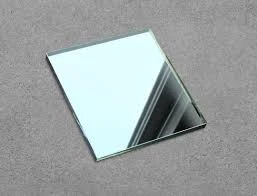

Exploring Low-E3 Glass Innovations in Energy Efficiency and Comfort
In the realm of energy-efficient building materials, Low-E3 glass has emerged as a revolutionary option for architects and builders aiming to enhance thermal performance while maximizing natural light. Low-E, or low emissivity, glass is treated with a special coating that reflects infrared light, helping to maintain comfortable indoor temperatures while reducing energy costs. Specifically, Low-E3 glass is designed to provide an optimal balance of solar control and visible light transmission, making it an ideal choice for both residential and commercial buildings.
Exploring Low-E3 Glass Innovations in Energy Efficiency and Comfort
The technology behind Low-E3 glass is rooted in a thin metallic coating that is applied to the glass surface. This coating serves as a barrier to infrared light while allowing visible light to pass through. As a result, spaces fitted with Low-E3 glass enjoy abundant natural light without the oppressive heat that can accompany traditional glazing systems. For homeowners and business owners, this translates into a more comfortable environment and reduced utility bills.

Moreover, Low-E3 glass plays a significant role in promoting energy efficiency within the building sector. With rising energy costs and increasing awareness of climate change, more builders are turning to high-performance materials like Low-E3 glass as a critical component of sustainable design. By incorporating this innovative material into their projects, builders can earn credits towards green building certifications, such as LEED (Leadership in Energy and Environmental Design), which can further enhance their marketability.
In addition to its energy-saving capabilities, Low-E3 glass also contributes to the aesthetic appeal of buildings. The clarity and brightness afforded by this glass make spaces feel larger and more inviting. Its versatility allows for a range of applications, from large commercial storefronts to modern residential homes, where expansive windows can showcase views while maintaining thermal efficiency.
Furthermore, with advances in glazing technology, Low-E3 glass can now be combined with other features such as tempered safety glass and triple glazing options, further enhancing its performance characteristics. These combinations offer improved sound insulation and increased resistance to impact, expanding the possibilities of its application in urban settings where noise pollution and safety concerns are prevalent.
In conclusion, Low-E3 glass represents a significant advancement in building technology, marrying aesthetics with energy efficiency. As demand grows for sustainable construction practices, this innovative material continues to position itself as a preferred choice for architects and builders striving to achieve comfort, efficiency, and environmental responsibility. Whether in a residential or commercial application, the integration of Low-E3 glass can lead to impactful results, both economically and environmentally, shaping a greener future for all.